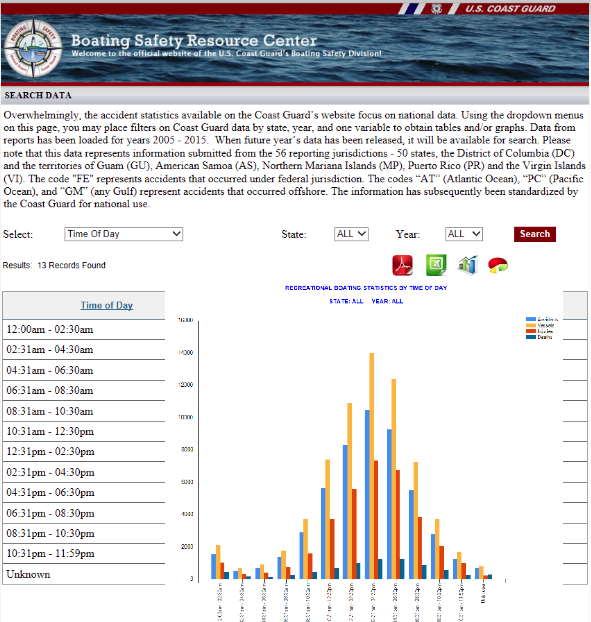The U.S. Coast Guard (USCG) is responsible for investigating reportable marine casualties, accidents, and serious marine incidents. The relevant mission statement and specific regulations can be found on the USCG Investigations Division homepage. After an incident has been reported, it is entered into a national database of all marine casualty and pollution incidents. These important historical records can then be accessed by researchers interested in understanding maritime safety, accident prevention, or trends in certain types of maritime incidents through time. Other agencies interested in maritime transportation performance measures rely on the USCG data to examine incident trends on U.S. waterways. Files for the Marine Casualty and Pollution Data for Researchers datasets can be downloaded directly from the U.S. Coast Guard Homeport website by following the drop-down menu options on the homepage Missions: Investigations: Marine Casualty Pollution Investigations page at https://homeport.uscg.mil/missions/investigations/marine-casualty-pollution-investigations.
As described by the USCG, “the Marine Casualty and Pollution Data files provide details about marine casualty and pollution incidents investigated by Coast Guard Offices throughout the United States. The database can be used to analyze marine accidents and pollution incidents by a variety of factors including vessel or facility type, injuries, fatalities, pollutant details, location, and date. The data collection period began in 1982 for marine casualties and 1973 for polluting incidents, and is ongoing. Documentation includes entity and attribute descriptions along with suggested solutions to general marine pollution, vessel casualty, and personnel injury and death questions.”
Visitors to the USCG Homeport data download site should note that there are three files available fore download, but it is the second file on the list (named MISLE_DATA.zip) that contains all available marine casualty data from January 2002 – July 2015. The files extracted from MISLE_DATA.zip can be opened with most standard spreadsheet editing software programs.
Source: USCG Marine Casualty and Pollution Data, https://homeport.uscg.mil/missions/investigations/marine-casualty-pollution-investigations
Data.Gov Links Related to this topic:
USCG Marine Safety Information Data, https://catalog.data.gov/dataset/marine-safety-information-data
USCG Facility Pollution Database, https://catalog.data.gov/dataset/uscg-facility-pollution



